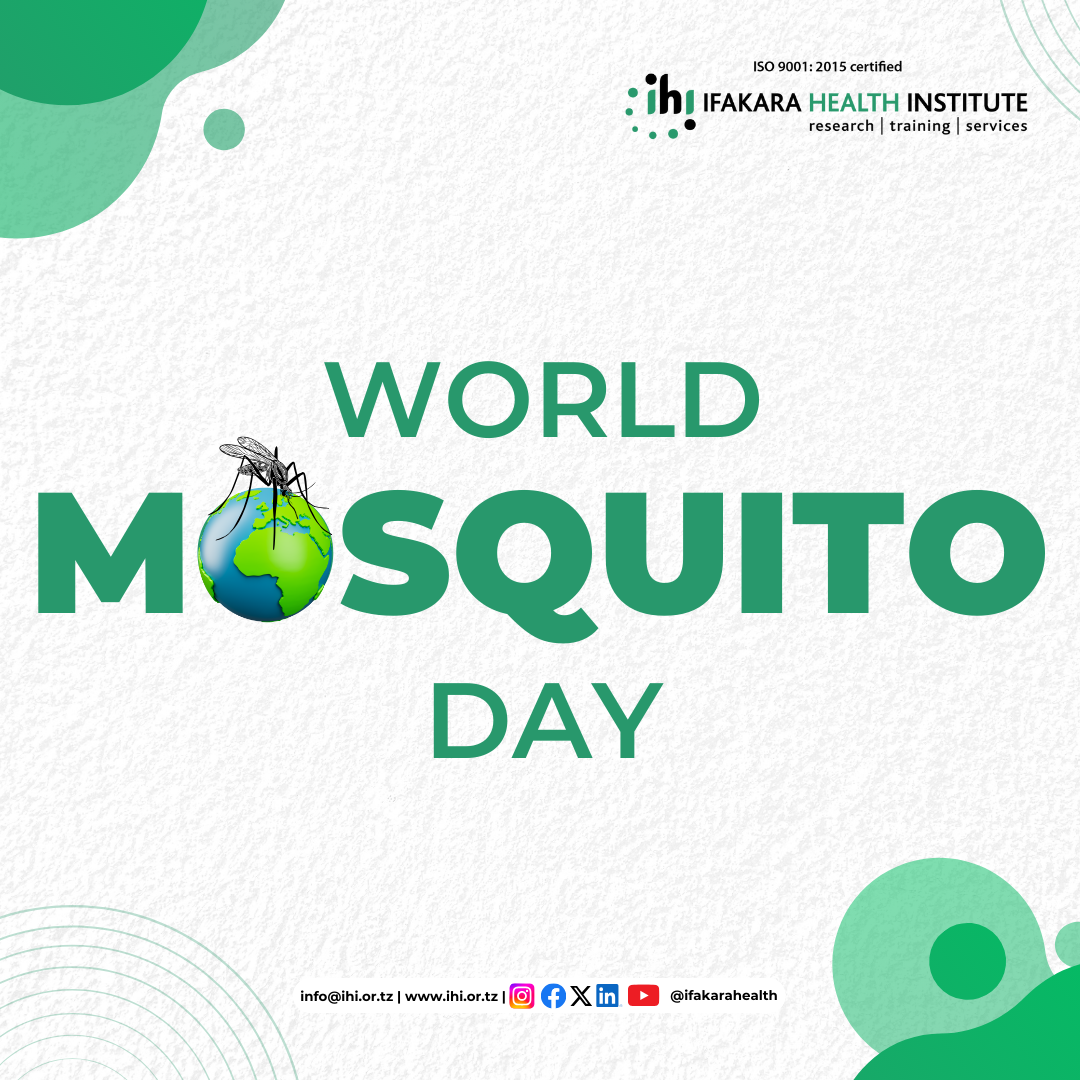
#WMD2025: Understanding the mosquito means saving lives

Every year on August 20, the world marks World Mosquito Day, recalling Sir Ronald Ross’s 1897 discovery that the mosquito transmits malaria. More than a century later, this tiny insect remains one of the deadliest creatures on earth — responsible for hundreds of thousands of deaths each year, with malaria still taking lives across Africa.
The mosquito is more than a nuisance; it is nature’s ultimate survivor. Its ability to adapt makes it one of the greatest threats to global health. As Dr. Dickson Lwetoijera explains in his World Mosquito Day 2025 blog, “the mosquito is clever… it has started resisting insecticides. It bites outdoors earlier in the evening, making nets less effective. Add climate change and fast-growing cities, and the fight against malaria suddenly feels harder.”
>> BLOG – World Mosquito Day 2025: Why a tiny insect still shapes our future
The mosquito as a partner in advancing science
At Ifakara, the mosquito is more than a research subject — it is a partner in science. Studied in Ifakara’s state-of-the-art facilities, among the world’s most advanced for vector research, scientists can observe its behaviors, test new tools, and train the next generation of researchers.
This close, hands-on work generates insights crucial for controlling malaria and other mosquito-borne diseases, including dengue, Zika, and chikungunya. By combining direct observation, data analysis, and advanced technologies, our researchers develop innovative strategies — including genetic approaches — to reduce disease transmission and bring communities closer to a malaria-free future.
Gates Notes focusing on Ifakara malaria elimination efforts
On this day, we were especially honored and proud to be featured in Bill Gates’ article “The Buzz Stops Here: African scientists are engineering mosquitoes that can’t spread malaria.”
>> Read the article: The buzz stops here
In the piece, Gates highlighted a major milestone achieved at the Ifakara Health Institute: the creation of the first transgenic mosquito on African soil, developed in Tanzania by our scientists through the Transmission Zero project in partnership with Imperial College London.
Transmission Zero represents a bold new approach: instead of eliminating mosquitoes, it aims to make them harmless by blocking malaria transmission. It is a breakthrough that showcases African scientific leadership and offers hope for a malaria-free future.
>> Learn more about Transmission Zero here: website
Exclusive articles: Read our “Mosquito Week” series
Leading up to World Mosquito Day, we launched our very own Mosquito Week—five days, five powerful stories from our research.
Day 1 featured a study uncovering key differences in the mating behaviors of Anopheles funestus and Anopheles arabiensis. Researchers found that funestus mates later at night, responds to red lighting, and peaks in activity later than arabiensis. These insights open the door to rearing funestus more effectively in labs—paving the way for innovative malaria control methods such as sterile insect techniques and genetic interventions.
>> Read here: MOSQUITOES: Scientists crack the code on their elusive mating habits
Day 2 spotlighted new research from Zanzibar showing that malaria-carrying mosquitoes prefer semi-permanent, concrete water bodies with high oxygen levels. After heavy rains, they also expand into natural sites. By mapping these breeding “hotspots,” the study demonstrates how targeting mosquitoes at the larval stage—through larviciding and improved water management—can offer a more sustainable and precise strategy, especially as resistance reduces the effectiveness of bed nets and spraying.
>> Read here: MOSQUITOES: New study maps breeding grounds in Zanzibar
Day 3 discussed highlights from Tanzania’s 2024 international summit, which brought together global experts to tackle the rising threat of Aedes-borne diseases. The report underscores that traditional tools are no longer enough in the face of climate change and rapid urbanization. It calls for faster innovation, stronger cross-sector collaboration, and affordable, community-driven solutions—from digital surveillance to eco-friendly control methods—to better prepare and protect vulnerable communities against future epidemics.
>> Read here: MOSQUITOES: Report on how Tanzania's Summit sparked hope against rising diseases
Day 4 discussed a study showing that digital image analysis provided a faster, cheaper, and more accurate way to assess mosquito net damage compared to the traditional WHO hole-counting method, which often underestimated wear. By photographing nets and measuring hole sizes through a custom interface, researchers found that image-based assessments closely matched ground-truth results and could be further automated with machine learning. This low-cost, scalable approach improved decision-making on net replacement, helping malaria control programs use resources more efficiently while keeping households better protected.
>> Read here: INNOVATION: Digital imaging offers a faster, more accurate way to assess mosquito net damage
Day 5 wrapped up the week with a study examining how targeting mosquito breeding sites through larval source management (LSM) significantly reduced malaria transmission when combined with existing interventions like insecticide-treated nets. Trials in Kenya and Côte d’Ivoire showed mosquito populations dropping by up to 88%, with corresponding reductions in malaria prevalence ranging from 11–72%, depending on local conditions. The research emphasized that success depended on careful adaptation to environmental and social contexts, robust monitoring, and strong surveillance systems.
>> Read here: MOSQUITOES: Could targeting their breeding grounds reduce malaria?
World Mosquito Day 2025, under the theme “Accelerating the Fight Against Malaria for a More Equitable World,” is a reminder of how crucial the mosquito is — not just as a vector of disease, but as a partner in the scientific fight against malaria.
We remain committed to our close, hands-on relationship with the mosquito: breeding it, studying it, and using it to generate evidence and innovations that bring us closer to a world free of malaria.
Tiny, deadly, and endlessly fascinating, the mosquito is at the heart of our research — and our mission.
